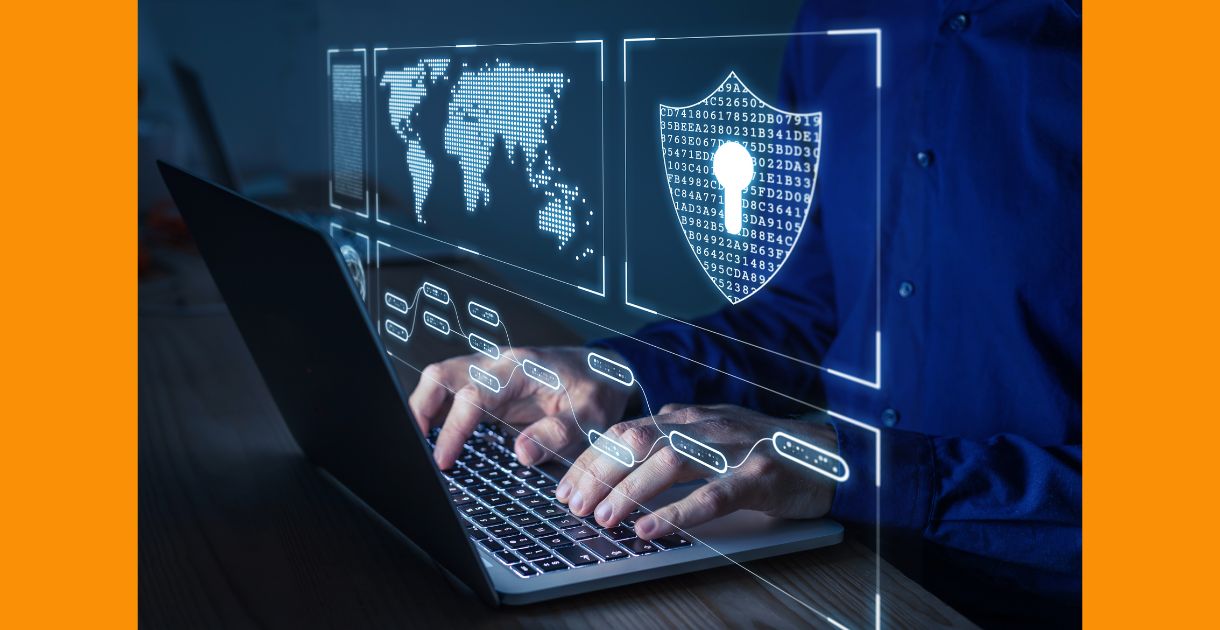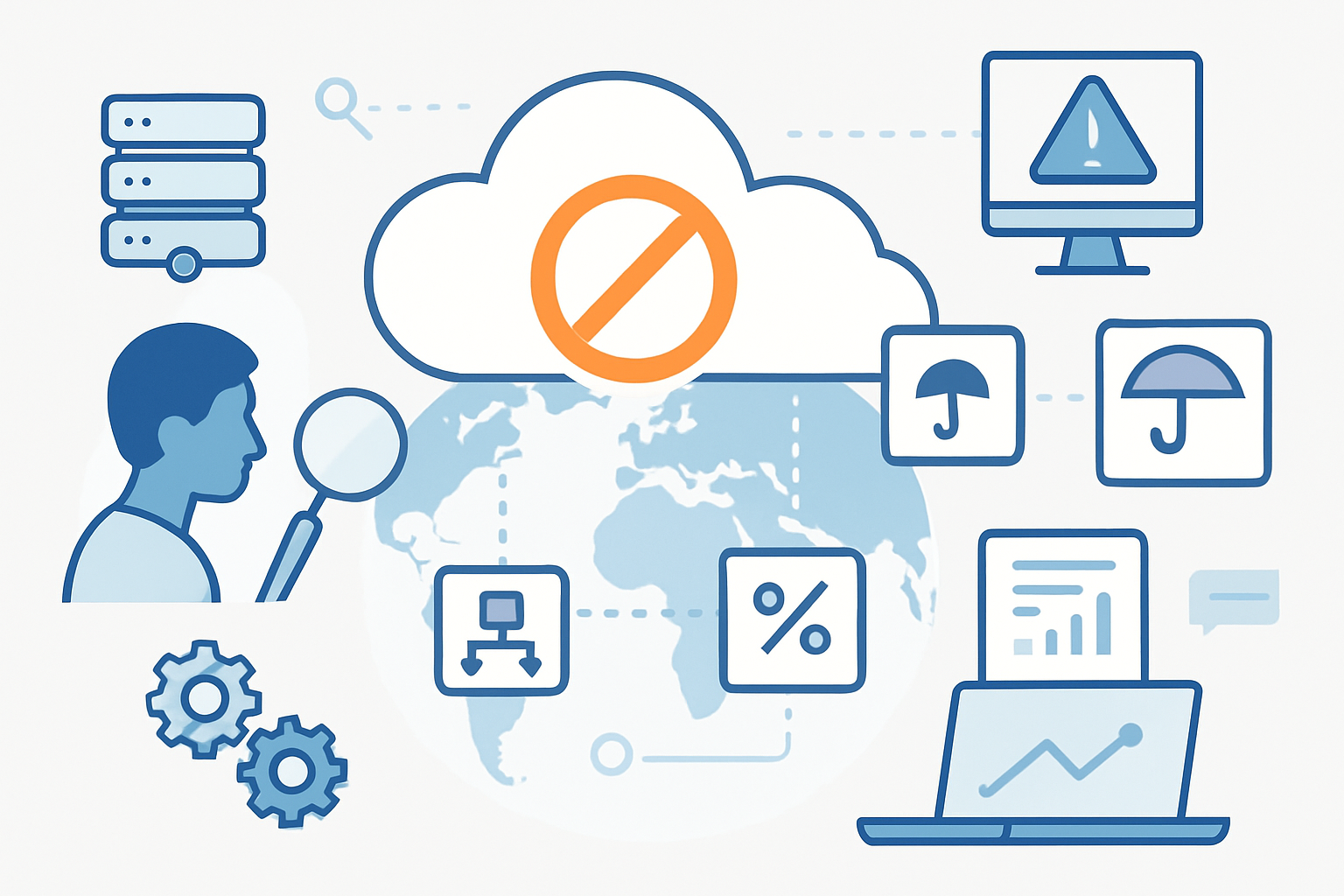Posted on May 30, 2025 at 9:50 AM
How Social Media Use Can Create Hidden Cybersecurity Risks
Social media is all around us, helping us stay connected, updated, and entertained. But beneath the endless scroll, a darker reality exists. Hidden cybersecurity threats are growing- some obvious, others much harder to spot.
The risks are especially alarming for young users. According to the National Institutes of Health, up to 95% of teens aged 13–17 use social media. Over a third admit they are online “almost constantly.” Many of them may not recognize the dangers lurking behind friendly posts and flashy content.
In this article, we’ll dive into how social media opens the door to cybersecurity threats. We’ll cover everything from classic phishing scams to new dangers hidden in manipulative algorithms designed to exploit our habits and emotions.
1. Social Engineering Attacks
One of the most common cybersecurity threats that stems from social media usage is social engineering. Social engineers use psychological tactics to trick users into revealing confidential information or performing actions that compromise security.
Many cybercriminals prefer social engineering because it lets them manipulate people instead of hacking through firewalls or antivirus software. As TechTarget points out, this method is attractive to attackers. It gives them access to networks, devices, and accounts without the heavy technical work usually needed to break through security barriers.
Social media platforms give cybercriminals easy access to a wealth of personal information. This includes birthdays, pet names, hobbies, and even the names of loved ones.
Hackers use this publicly available information to craft convincing phishing emails, fake friend requests, or scam messages. These may appear trustworthy but are designed to steal passwords, financial details, or other sensitive information.
2. Account Hijacking and Identity Theft
Many people underestimate how easily hackers can hijack social media accounts. Weak passwords, reused credentials, or falling for phishing schemes can leave your profile vulnerable.
A 2021 online survey in the United States, as reported by Statista, revealed that 37% of social media users had their profiles hacked. Facebook was the most targeted, with 77% of these incidents, followed by Instagram at 35%.
Once inside your account, attackers can impersonate you to scam your friends, access private conversations, or even blackmail you. Social media accounts are often linked to other services, making the risks even greater. A compromised Facebook or Google account can serve as a gateway to your email, online shopping sites, banking apps, and more.
3. Malware and Malicious Links
Social media is filled with tempting links to promotions, giveaways, and breaking news, making it easy to get drawn in. However, not all links are created equal, and some can be downright dangerous.
Clicking on a malicious link shared through social media can lead to serious security issues. Cybercriminals are skilled at disguising harmful links as legitimate content, often using enticing headlines or trusted sources to lure people in.
In some cases, they hack verified accounts to spread their malicious links more effectively. Followers are more likely to trust links coming from familiar profiles. The more convincing the disguise, the easier it is for them to infect multiple users before anyone realizes what’s happening.
4. Manipulative Algorithms that Prey on User Vulnerabilities
Social media’s connection to traditional cybersecurity issues like phishing and hacking is well known. However, there’s a growing argument that manipulative algorithms should also be considered a cybersecurity concern.
The recent Instagram and Facebook lawsuit casts a harsh light on the harmful ways social media platforms impact their users. At the center of the controversy are the sophisticated algorithms designed to maximize user engagement, but at what cost?
Critics argue that these algorithms exploit users’ psychological vulnerabilities, amplifying insecurities and promoting divisive content, TorHoerman Law notes. They also flood feeds with unrealistic images that fuel body image issues, anxiety, and fear.
Although this may not fit the traditional mold of a cybersecurity attack, it shares important overlaps:
- Data misuse: Platforms use sensitive behavioral data to manipulate emotions and actions.
- Psychological exploitation: Algorithms actively guide users into feedback loops that may harm their mental and emotional well-being.
- Informed consent concerns: Most users are unaware of the extent to which they are being influenced, raising serious ethical questions about platform security and transparency.
5. Privacy Erosion Through Oversharing
Oversharing on social media has become second nature for many, but it carries serious risks that are often overlooked. Every detail you post, from your current location and travel plans to life milestones, adds to a digital footprint that can be exploited.
Cybercriminals can use this information to impersonate you, hack into your accounts, or even commit identity theft and financial fraud. Something as simple as a vacation photo tagged with your location can put you at risk. Even a post about moving to a new home can give malicious actors the clues they need to strike when you’re most vulnerable.
What seems like harmless sharing can quickly become a security threat in the wrong hands.
FAQs
How can I tell if a social media link is safe to click?
Always examine the URL carefully before clicking. Watch out for shortened links, misspelled words, or unusual domain names, as these are major red flags. Using link preview tools and browser security extensions can also help you identify suspicious links and avoid falling for scams.
What are some early warning signs that my social media account has been hacked?
Unusual login alerts, changes to your profile information, or messages sent without your knowledge are all warning signs. Friends reporting strange activity from your account is another major red flag. If you notice any of these, change your password immediately and enable two-factor authentication.
Are newer social media platforms safer than older ones like Facebook or Instagram?
Not necessarily. Newer platforms may have fewer users (which could mean fewer hackers for now). However, they can also have weaker cybersecurity measures or untested privacy policies. Always research and adjust privacy settings regardless of the platform age.
Overall, social media has undeniably changed how we connect and communicate, but it has also introduced hidden cybersecurity risks. Protecting yourself online means more than just avoiding phishing emails. It means recognizing how even the very design of social media platforms can expose you to new types of threats.
By staying aware, practicing good security habits, and pushing for platform accountability, users can enjoy social media without becoming easy targets.









